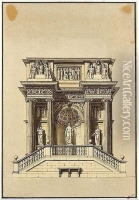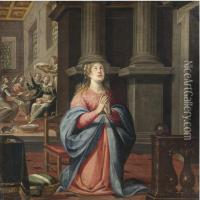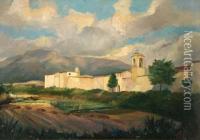Paolo Landriani Paintings
Paolo Landriani, born in Milan in 1757 and deceased in the same city in 1839, was a prominent Italian painter, active during a period marked by the transition from the late Baroque and Rococo styles to Neoclassicism in the arts. His work, while not as widely recognized today as some of his contemporaries, played a significant role in the artistic scene of Northern Italy, especially in and around his native Milan. Landriani's contributions to art were closely tied to the shifts in aesthetic preferences and the evolving cultural landscape of the late 18th and early 19th centuries. Landriani's oeuvre mainly comprises religious and historical paintings, reflecting the predominant themes of his era. He was deeply influenced by the dramatic intensity of the Baroque and the ornamental elegance of the Rococo, yet his later works exhibit a clear inclination towards the more structured and serene qualities of Neoclassicism. This transition mirrors the broader changes in European art of the time, as artists moved away from the emotional and decorative towards a style characterized by harmony, simplicity, and an emphasis on classical antiquity. Throughout his career, Landriani was engaged in several significant projects, including the decoration of churches and public buildings, which allowed him to leave a lasting mark on the architectural landscape of Milan. Despite the challenges posed by the changing tastes and political upheavals of his time, he managed to maintain a successful career. Landriani's legacy, though somewhat overshadowed by more famous names of Italian art, remains important for understanding the nuances of this transitional period in art history. His work is preserved in various collections and institutions, serving as a testament to the vibrant artistic culture of late 18th and early 19th century Milan.



